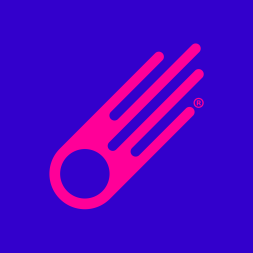Four reasons to build a clickable prototype

Author
Bad Dinosaur TeamBuilding an app can be an overwhelming project, even if it’s an MVP. Especially if the project is in its early stages, you don’t have funding yet, and don’t know whether the app is going to work, it can be hard to find the money and courage to go ahead with the build. Luckily, there’s another option: a clickable prototype. This is a “mockup” of an app, designed to look and act right but without all of the code behind it. This means that you can see what the app will look like before we build it, and use the prototype as a way to improve your idea, collaborate with others, and even find funding. We like working in this way because it has several advantages, and we often get very good feedback from clients who like the option to have a good-looking prototype with minimal amounts of time and money invested.
1. The idea quickly becomes tangible
For many of our clients, the moment that they can click their way through the prototype of their app is really exciting, because they nally get to see a tangible version of what they have been imagining for a long time.
A clickable prototype means that you see the app within a relatively short time. It’s great for everyone if the clients “meet” their product as early as possible, because that means that conversations around design and functionality become much more realistic and rooted in the reality of the prototype. You can click through the screens and see how a user would interact with the app, so it’s easy to get a feel for it and understand how the different animations and functions work in the real world.
2. You can use it to collaborate and get funding
A clickable prototype is easy to show off, whether it’s to attract possible investors or to impress friends and family. In any case, it’s extremely satisfying to have a physical manifestation of the project that you might have thought and talked about for a long time. Having a physical product makes it a lot easier to talk to people about the project and to collaborate with others to take it further, because you’re not just chatting about the scrawled drawings on a napkin anymore. This also means that all the conversations around development are much more constructive, because you have a realistic starting point and can easily talk about tangible changes rather than abstract ideas.
The bank and any investors will also love to see the product “live.” A clickable prototype makes it easier to explain your idea to others and to demonstrate its usefulness in the real world. The app can also be more easily explained to focus groups, who can give you an idea of how to tweak the app to make the concept as viable as possible before development starts.
3. You maintain flexibility
If you want to change some things, you can more easily discard a bit of design work and move on from there to take it in the new direction. If the clickable prototype is less popular than you’d hoped, or you realise you need to make major changes, you’ll still have the flexibility to do so. The farther you move into development, or even onto quality assurance, the more costly (and more of a hassle!) it will be to make changes to the app. While the project is still in the design phase, i.e. when the clickable prototype is being made, it’s much easier to change things. It’s not that a clickable is anywhere near free to scrap, but it’s much less expensive than scrapping several weeks worth of development time later on.
This also means that a clickable prototype project is lower risk than a full initial build - the investment needed to build a clickable prototype is much smaller than if developing an app, and as such, it could be a good way to start if you are unsure about the app, or if you have some investors who are interested, but unwilling to invest without a further proof of concept.
4. It can be used as a design template for development
If you choose to go ahead and build an MVP based on your clickable prototype, the design work that has been done will be used as a template for the design as the project moves into the development stage. While it won’t be completely reproduced, a lot of the concept development and some time-intensive design elements like illustrations, buttons, or colour schemes, can be used when coding the app, which saves time (and money) in the development stage. The designers will be able to build upon what has already been done so they’re not starting from scratch, and the design has already been through the rst rounds of tweaks and input from you before development starts.
For these reasons (and more), we believe that a clickable prototype is often a very good starting point when developing an app, but it might not be for everyone. If you’re considering it, set up a chat with us and we’ll help you figure out whether it’s the right thing for exactly your project.
